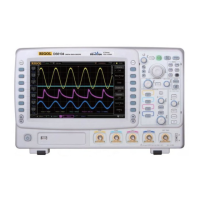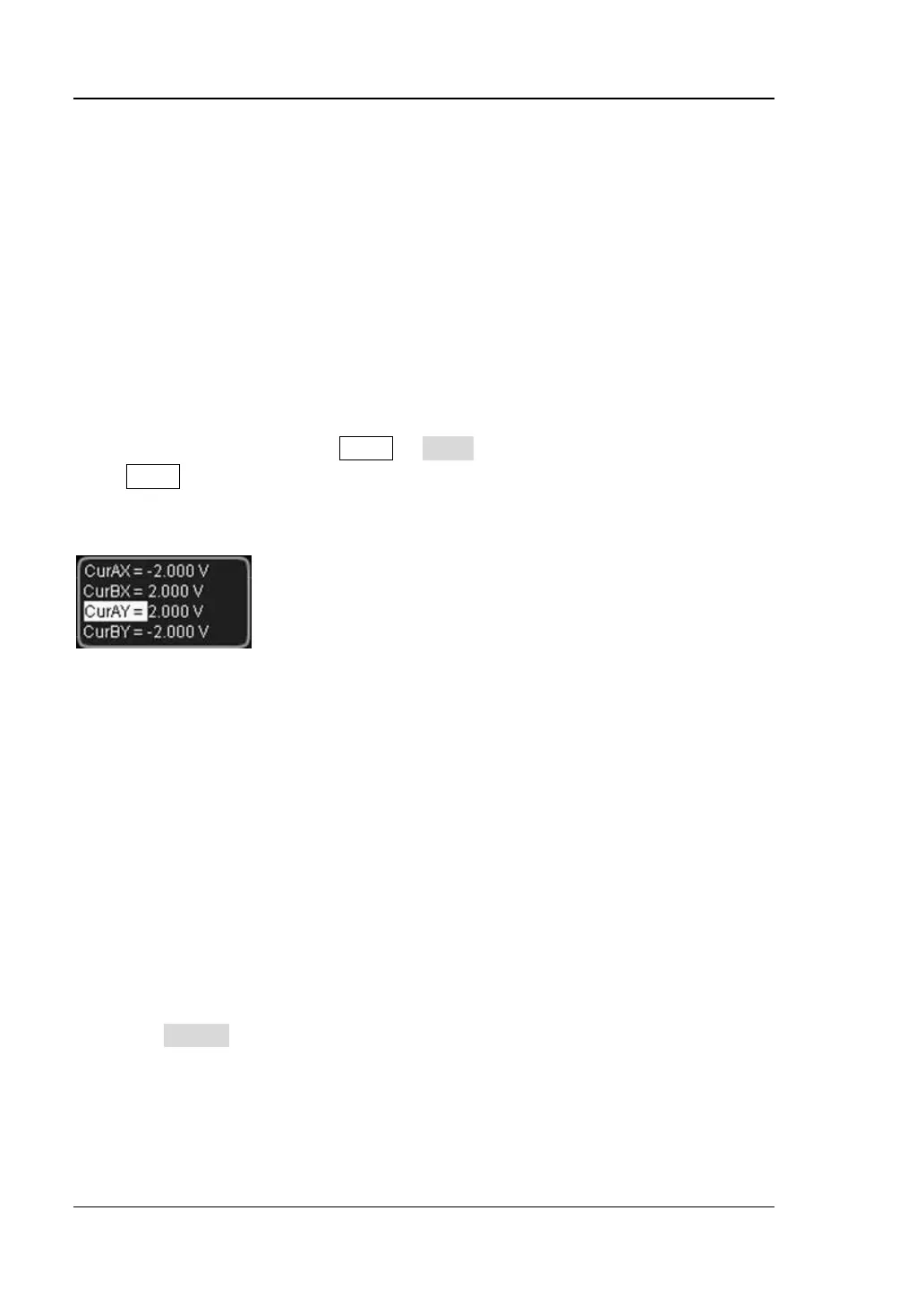RIGOL 6 To Make Measurements
6-40 DS6000 User’s Guide
X-Y Mode
In this mode, the X cursor and Y cursor denote the amplitudes of the waveforms of
the specified channels respectively. You can measure the waveform amplitude at the
crossing point of the cursors by adjusting the cursor positions.
Note: You can only select X-Y cursor mode when the time base mode is set to "X-Y"
(please refer to "Time Base Mode
"); in addition, in "X-Y" time base mode, you can
only use X-Y cursor mode.
In "X-Y" time base mode, press CURS Mode "X-Y" to turn the X-Y mode on or
press CURS continuously to switch to "X-Y"; the measurement results will be
displayed at the upper-left corner of the screen in the following mode.
The X value at cursor A (CurAX).
The X value at cursor B (CurBX).
The Y value at cursor A (CurAY).
The Y value at cursor B (CurBY).
Note: In the measurement results, the amplitude unit is the same with the amplitude
unit currently selected for the corresponding channel.
If necessary, please modify the X-Y cursor measurement parameters by referring to
the following steps.
1. Specify the cursor region
Press Region to select "XY1" or "XY2".
XY1: the X cursors and Y cursors are used to measure the amplitudes of the
specified points (the crossing points of the cursors) of the waveforms of
CH1 and CH2 respectively.
XY2: the X cursors and Y cursors are used to measure the amplitudes of the

